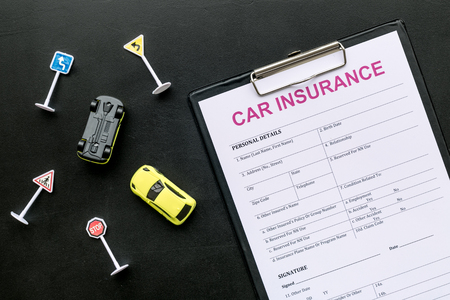1. Understanding the Challenges of Insuring Teen Drivers
When it comes to choosing auto insurance for teen drivers in the U.S., understanding why teenagers are considered high-risk is crucial. Insurance companies look at statistics and risk factors, and teens unfortunately check many boxes that lead to higher rates.
Why Are Teen Drivers Considered High-Risk?
Teenagers are new to driving and often lack experience behind the wheel. According to the Centers for Disease Control and Prevention (CDC), car crashes are the second leading cause of death for U.S. teens. Insurers know that teens are more likely to:
- Be involved in accidents due to inexperience
- Get distracted while driving (by phones, friends, or music)
- Engage in risky behaviors like speeding or not wearing seatbelts
- Drive at night or during weekends when accident rates are higher
How Does This Affect Auto Insurance Rates?
Because of these risks, insurance companies usually charge much higher premiums for teen drivers compared to adults. Take a look at this comparison:
| Driver Profile | Average Annual Premium (U.S.) |
|---|---|
| Adult Driver (35-year-old, clean record) | $1,600 |
| Teen Driver (16-19 years old) | $3,800 – $5,000+ |
This table shows how much more expensive it can be to insure a teen driver. The actual premium depends on factors like location, type of car, and driving history.
Coverage Options Impacted by High Risk
Insurers may also limit coverage options or require higher deductibles for teens. Some common changes include:
- Mandatory comprehensive and collision coverage: Lenders may require these if you’re financing a vehicle.
- Higher liability minimums: To protect against costly claims from accidents involving injury or property damage.
- Add-on features: Some insurers offer special programs like accident forgiveness or safe driving apps specifically for teens.
The Bottom Line on Teen Auto Insurance Challenges
The combination of inexperience and higher risk behaviors means that insuring a teen driver is more expensive and sometimes comes with stricter coverage requirements. Knowing why rates are higher can help you make smarter choices as you search for the best policy for your family.
2. Comparing Coverage Options and Limits
When choosing the best auto insurance for teen drivers in the U.S., its important to understand the different types of coverage available and how much protection each option offers. Teen drivers are considered high-risk by insurance companies, so selecting the right coverage can help protect your finances while keeping your teen safe on the road.
Types of Auto Insurance Coverage
| Coverage Type | What It Covers | Is It Required? |
|---|---|---|
| Liability | Pays for damages and injuries you cause to others in an accident. | Yes, required by law in most states. |
| Collision | Covers damage to your own car if you hit another vehicle or object. | No, but highly recommended for teen drivers. |
| Comprehensive | Pays for damage to your car not caused by a collision, like theft, vandalism, or weather. | No, but often recommended, especially for newer cars. |
| Uninsured/Underinsured Motorist | Covers costs if youre hit by a driver with little or no insurance. | Required in some states; optional in others. |
| Personal Injury Protection (PIP) | Pays medical expenses for you and passengers after an accident, regardless of fault. | Required in some states; optional in others. |
Recommended Coverage Limits for Teen Drivers
The minimum liability limits required by state laws may not be enough to fully protect your assets if your teen is involved in a serious accident. Since teens are more likely to be involved in accidents, it’s smart to consider higher coverage limits.
Common Liability Coverage Limits:
- Bodily Injury Liability: $100,000 per person / $300,000 per accident
- Property Damage Liability: $100,000 per accident
Why Higher Limits Matter:
- If your teen causes an accident that results in costly injuries or damages, low coverage limits could leave you paying out-of-pocket for the rest.
- A higher limit offers more financial protection and peace of mind for your family.
Tip:
If you’re unsure about what limits to choose, talk to your insurance agent. They can help you decide based on your budget and personal situation. Remember, insuring a teen can be expensive, but having the right coverage is worth it if an accident happens.
![]()
3. Discounts and Ways to Save on Teen Auto Insurance
Auto insurance for teen drivers in the U.S. can be expensive, but there are several ways families can save money. Many insurance companies offer special discounts just for teens and their parents. Knowing about these options can help you get the best coverage without breaking the bank.
Popular Discounts for Teen Drivers
Insurance companies want to encourage safe driving and responsible habits among young drivers. Here are some of the most common discounts available:
| Discount Type | Description | How to Qualify |
|---|---|---|
| Good Student Discount | Savings for students who maintain a strong GPA | Usually requires a “B” average (3.0 GPA) or higher; provide report cards or transcripts |
| Driver Training Program | Lower rates for completing an approved driver’s education course | Enroll your teen in a recognized drivers ed program and submit proof of completion |
| Multi-Policy Bundling | Discounts when you combine auto insurance with other policies (like home or renters) | Purchase multiple types of insurance from the same provider |
| Safe Driving Discount | Savings for maintaining a clean driving record with no accidents or violations | Your teen must drive accident-free for a set period, often 6-12 months |
| Low Mileage Discount | If your teen doesn’t drive much, you may pay less for coverage | Report annual mileage to your insurer; verify eligibility if your teen only drives occasionally |
| Student Away at School Discount | If your teen attends college far from home and doesn’t have regular access to the car, premiums may drop | Your teen must attend school at least 100 miles away and not have the family car with them full-time |
Tips for Maximizing Savings on Teen Auto Insurance
- Shop Around: Compare quotes from different insurers—discounts and rates can vary widely.
- Add Teens to Your Policy: Adding a teen driver to an existing family policy is usually cheaper than buying a separate policy.
- Select a Safe Car: Cars with high safety ratings and lower repair costs often cost less to insure.
- Encourage Good Grades: Remind your teen that better grades can mean big savings each semester.
- Ask About Additional Discounts: Always ask agents about any other savings programs, such as telematics or pay-as-you-drive plans.
4. Evaluating Insurance Providers
Choosing the right insurance company is just as important as picking the right policy, especially when insuring a teen driver. Here are some helpful tips for researching and comparing insurance providers in the U.S., focusing on reliability, customer service, and special programs that benefit families with teens.
Check Company Reliability
You want to trust your insurance company, so start by checking their financial strength and reputation. Reliable companies will have strong ratings from independent agencies like AM Best, J.D. Power, or Standard & Poor’s. You can visit these agencies’ websites to see how insurers are ranked for stability and claims handling.
| Rating Agency | What It Measures | Where to Find Ratings |
|---|---|---|
| AM Best | Financial strength & ability to pay claims | ambest.com |
| J.D. Power | Customer satisfaction & claims experience | jdpower.com |
| Standard & Poor’s | Creditworthiness & financial stability | spglobal.com/ratings |
Assess Customer Service Quality
A good insurer should be easy to reach and responsive when you need help. Read online reviews on trusted sites like the Better Business Bureau (BBB) or Trustpilot, and ask friends or family about their experiences. Look for companies known for quick claim processing and helpful support staff, especially since teens may need extra assistance navigating accidents or emergencies.
Compare Special Programs for Teen Drivers
Many insurers offer unique programs designed for families with teen drivers. These programs may provide discounts, safe driving apps, or accident forgiveness options. When shopping around, ask about:
- Good Student Discounts: Lower rates for teens who maintain a certain GPA.
- Driver Training Discounts: Savings for completing an approved driver education course.
- Telematics Programs: Apps or devices that monitor driving habits and reward safe behavior.
- Accident Forgiveness: Prevents your rate from increasing after your first at-fault accident.
- Distant Student Discounts: For students who attend school far from home without a car.
| Program Type | Description | Potential Benefit |
|---|---|---|
| Good Student Discount | Savings for maintaining good grades (usually B average or higher) | Lower premium costs for families with responsible students |
| Telematics/Safe Driving Apps | Monitors driving behavior via app or device in the car | Discounts based on safe driving habits; feedback for improvement |
| Accident Forgiveness | Your first at-fault accident doesn’t raise your rate | No surprise premium hikes after one mistake |
| Distant Student Discount | Covers students away at college without regular car access | Saves money if your teen isn’t driving often while at school |
| Driver Training Discount | Savings for completing an approved driver education course | Lowers risk profile and premium cost for new drivers |
Narrow Down Your Choices
Create a shortlist of providers who meet your standards for reliability, customer service, and teen-focused benefits. Request quotes from each company using the same coverage levels so you can make an apples-to-apples comparison. Don’t hesitate to call insurers directly with questions—this is also a great way to test their customer service firsthand!
The Bottom Line on Evaluating Providers
A little extra research up front can save you stress—and money—down the road. By focusing on reputable companies that offer solid support and meaningful perks for teen drivers, you’ll set your family up for a safer, more affordable driving experience.
5. Tips for Lowering Risks and Premiums
Encourage Safe Driving Habits
One of the most effective ways to keep auto insurance premiums down is by promoting safe driving habits among teen drivers. Parents should have open conversations about the dangers of distracted driving, speeding, and not wearing seatbelts. Setting a good example behind the wheel can also reinforce these lessons.
Key Safe Driving Tips for Teens
| Tip | Why It Matters |
|---|---|
| No texting or phone use while driving | Reduces distractions and helps prevent accidents |
| Always wear a seatbelt | Greatly lowers risk of injury in case of a crash |
| Obey speed limits | Helps avoid tickets and dangerous situations |
| No driving under the influence | Keeps everyone on the road safer and avoids legal trouble |
| Avoid late-night driving when possible | Most teen crashes happen at night due to low visibility and fatigue |
Choose the Right Vehicle
The car your teen drives can significantly affect insurance rates. Generally, newer vehicles with advanced safety features and high safety ratings cost less to insure than older or sportier cars. Avoid high-performance models, as they tend to come with higher premiums for young drivers.
What to Look For in a Teen’s Car
- Safety Features: Anti-lock brakes, airbags, rearview cameras, automatic emergency braking, lane departure warnings.
- Crash Test Ratings: Check ratings from organizations like IIHS or NHTSA.
- Lower Horsepower: Less powerful engines are less tempting for risky behavior and usually cheaper to insure.
- Reliability: Reliable cars mean fewer breakdowns and lower repair costs.
Take Advantage of Telematics Programs
Many U.S. insurers offer telematics programs—also called usage-based insurance (UBI)—that monitor driving habits through a mobile app or device installed in the car. These programs reward safe driving behaviors (like gentle braking, limited night driving, and keeping to speed limits) with discounts on premiums.
Popular Telematics Programs in the U.S.
| Insurance Company | Program Name | Main Features |
|---|---|---|
| Progressive | Snapshot® | Tracks speed, braking, miles driven; offers personalized discounts for safe habits. |
| State Farm | Drive Safe & Save™ | Monitors driving via smartphone app; rewards low mileage and safe behaviors. |
| Allstate | Milewise®/Drivewise® | Pays per mile or tracks safe habits for potential savings. |
| Nationwide | SmartRide® | Provides feedback on acceleration, braking, idle time, and more; gives up-front discount for enrolling. |
Other Practical Ways to Reduce Premiums
- Good Student Discounts: Many insurers offer lower rates if your teen maintains a B average or better in school.
- Driver’s Education Courses: Completing an accredited course can lead to additional discounts.
- Add Your Teen to Your Policy: This is usually cheaper than getting them their own policy.
- Select Higher Deductibles: If you can afford it, choosing a higher deductible can lower monthly premiums—but be sure you have enough savings to cover it if needed.
A Little Planning Goes a Long Way!
If you take proactive steps like encouraging safe driving, picking a sensible vehicle, using telematics programs, and seeking out discounts, you’ll help keep your teen driver safe—and keep your family’s auto insurance costs as low as possible.


